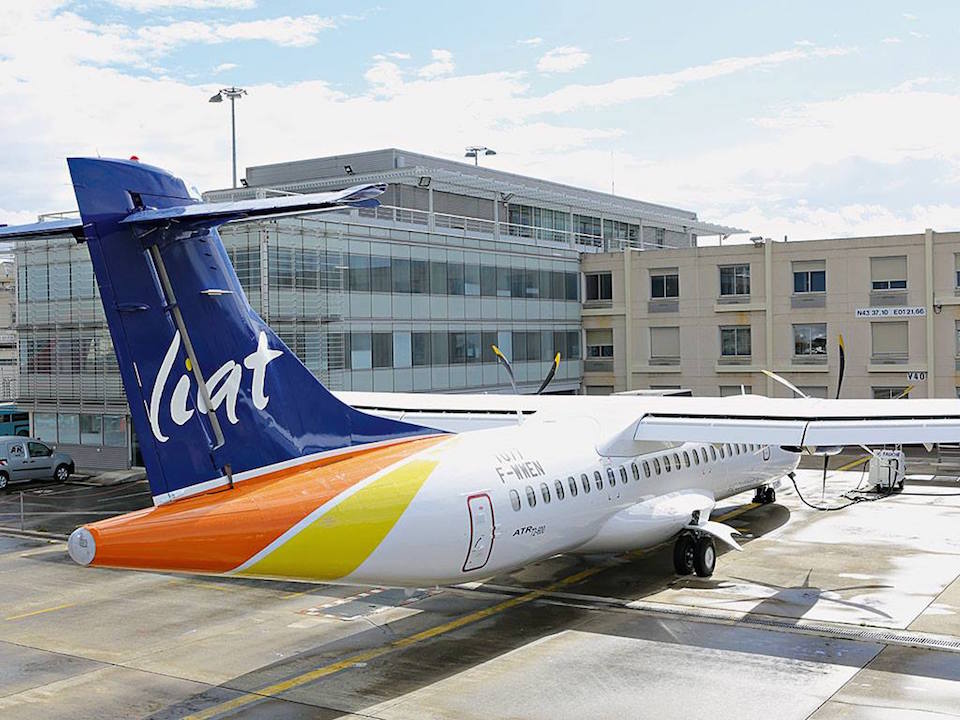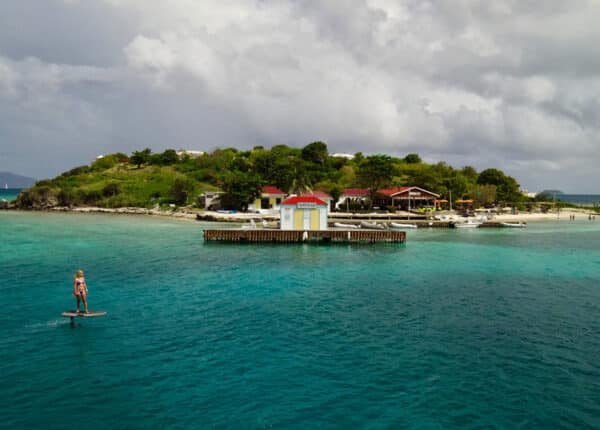New perspectives on improving Caribbean air travel
By Ralph J. Blanchard
Op-Ed Contributor
Depending on how one choses to define the region, the groupings of islands represented under the “Caribbean” designation can range in population anywhere from over 40 million inhabitants if we include the islands from the Bahamas to Trinidad, to a population somewhere around 13 million inhabitants if only the southern region is considered. Either way you look at it, the Caribbean region is not insignificant in either size, economic consequence, or social and cultural interdependency. Accordingly, one can reasonably conclude that the operational and economic ingredients for effective inter-island air service are in place…however, an effective/competitive intra-Caribbean airline or air transport network remains elusive.
The region’s dependence on air transportation to sustain and stimulate fundamental socio-economic growth and dynamics is absolute. However, the multiplicity of economies, cultures, and government structures has made the task of establishing an operationally efficient, dependable, and financially sound inter-Caribbean airline extremely difficult, and, so far, largely unreachable. But it’s not for lack of trying.
Historically, there have been numerous attempts to address the region’s inter-island connectivity challenges by legacy, national, regional, and niche inter-island carriers including at one point the “island-hopping” service by Pan Am with Boeing 727s, LIAT with its turboprops and even a brief foray into jet service with the magenta-colored BAC-111, Caribair’s DC-3s and even a DC-9, Prinair’s Herons, etc.. However, the problem with regards to a establishing a competitive and uniquely inter-Caribbean air service solution persists today.
High yields, limited frequencies, serious inconsistencies in service dependability, low service levels, a complex multi-government environment, various forms of government “protectionism”, etc., has been, and remains, he rule in the Caribbean. The regional airlines that have been established, and that currently operate, are characteristically under-funded, have organizational structures that are often bloated and inefficient, fleets that are characterized by various types of aged jet/turboprop/piston aircraft that require constant and often intense maintenance and are fuel inefficient, they lack in customer service or other passenger-airline interface, and generally dependent on government financial support, subsidies, or protection in order to survive with even a modicum of services. Even “privately-owned” airlines take advantage of the sensitive and emotional elements of Caribbean inter-island air service dependency in order to demand government bailouts, subsidies, or protection from competition in some form, seemingly as a fundamental “right”.
While the air transport industry worldwide has been dramatically transformed technically, operationally and economically, the characteristics of airlines in the Caribbean region appears to have not changed fundamentally from either the strategic or tactical foundation that has driven inter-Caribbean air transportation over the past four (4) decades.
Some of the more dominant tourism-driven island economies in the region have individually sought, and benefited from, improvements in air transport connectivity to the US and European markets through good economic fortune and/or individual air service development initiatives and incentive programs designed to benefit their island(s) uniquely. However, the ability for efficient and convenient nonstop, direct, or connecting regional intra-Caribbean travel remains an inefficient and expensive proposition for regional business or leisure travel.
The greatest level of inter-island air transport success appears to have been achieved during the period when American Eagle and Prinair used San Juan as a Caribbean “hub” to essentially facilitate North American and European O&D and “beyond” traffic , especially to the more dominant and tourism-driven islands of the region. With this system in place, some level of reasonably convenient and “competitive” inter-island connectivity was established, and existed for a period of time.
Still today, it appears that the fundamental characteristics of inter-Caribbean air transport remains one of developing air service strategies and alliances that meet the needs of an individual island, or a specific group of islands, as opposed to establishing an inter-island operational and political platform that could stimulate and sustain an effective, and dare I say profitable, Caribbean air service network. Under this environment, a comprehensive and competitive intra-Caribbean air transport network will not evolve. Effective and comprehensive Inter-island air services will continue to be erratic, lacking in any scale efficiencies, politically driven, and subsidized or used in some manner that dilutes the incentive for creativity and fundamental business dynamics where only those who deserve to be in business can/will profitably survive.
So, while the foundations for an establishment of an inter-Caribbean airline, or airline system, can likely be financially and operationally demonstrated, the “missing link(s)” that have so far frustrated the efforts to establish, and sustain, such an airline must be found in order to energize individual nations of the Caribbean to come together to create an air transport environment where an efficient and competitive regional inter-Caribbean airline can be possible… and there are always solutions.
Over the years, enhancements in aircraft technology, free market competition strategies, available private financing (not for the faint of heart in the airline business), etc., have created the opportunity to re-think the Caribbean air service environment, and perhaps find a solution that is better than the fragmented system that exists today. It is not an easy task, but the elements are there to formulate and implement an effective and competitive solution IF certain strategies can be employed on a “regional” platform.
Certainly, the network that would allow all sectors of the region to be adequately served by air will require a combination of both economic and social considerations in its success formula. Air transportation is a vital link in a region such as the Caribbean, and often, the ability to provide service on a purely economic platform is, at best, challenging. But economics and social responsibility need not be mutually exclusive in air transportation. In those cases where economics are elusive, a practical socio-economic balance element in the service formula needs to be established. For islands that “need” a certain level of “essential” air service, but the cost to economically provide the service is prohibitive, a solution has to be found that could make a “practical” level of service available under some form of carefully assessed and managed support function.
Of course, a discussion on this topic requires a much broader and deeper understanding of the situation than this simple overview can offer in attempting to practically understand the many factors that contribute to the complexity of establishing and sustaining competitive inter-Caribbean air service. But the conversation is important to the region.
So, to perhaps simulate further thinking and dialog on the subject among the readership, let me offer a few thoughts that may be considered in an initial discussion designed to promote the development of an economic, operational, and political platform that could set the stage for the a future competitive inter-Caribbean airline(s). These thoughts may include:
- A hub-centric strategy (San Juan is strategically situated, and has the hub infrastructure platform, to facilitate both northern and southern Caribbean connectivity)
- An airline with limited aircraft type preferably, and preferably from one manufacturer in order to optimize equipment utilization, minimize operating costs, and carefully selected to address the longer/shorter haul segments and traffic density characteristics of the various market segments.
- An airline(s) driven exclusively by private investments with a quest for efficient and competitive excellence.
- Airline(s) devoid of any direct or indirect government involvement, sponsorship, or influence. No government subsidies or other influence…existing airline must survive based on their financial resources and business acumen.
- Establishing a regional inter-Caribbean “open skies” (deregulated) environment established to allow ease of entry/exit, and provide the constant opportunity for competition. This is critical to efficient and laser-focused attention by management in order to produce, and deliver, a successful operation. The constant spectre of “competition” is the best “subsidy” for providing the most efficient airline management and operational focus. Airlines cannot expect, and should not be provided with, any incentives that could in any way deter competition in any market by any government interest or entity.
- A single Flight Information Region (FIR) to facilitate efficient and cost-effective navigation throughout the region.
- Because of the significant non-economic elements that are part of life, and air service dependency, in the Caribbean, for those islands where air service is required, but where the economics of providing such service would result in a fare structure that is prohibitive by any reasonable competitive “yield analysis”, the Island government may specify an “essential” air service level for which they require air services to be provided by the private airline operator. Such essential level of service could be provided by the airline(s) at a reasonably competitive airfare to the passengers, and any “loss” recognized on that specific route could be reimbursed on a periodic basis to the carrier after an independent audit of the route/service is conducted to determine the validity of the loss claim.
- To provide such a loss-recovery function, the private airline(s) could be required to establish the equivalent of a “sinking fund” that could be funded from a reasonable incremental “yield” factor (determined with the help of independent and qualified firms) that could be factored into the price of all air tickets generally sold on all routes throughout the region. This “sinking fund” established by the airline(s) would provide coverage for the essential air service levels required by the smaller islands in order to cover the difference (loss) incurred by the airline between pure economic pricing and the competitive pricing levels that would be charged the passenger.
- The loss-recovery “sinking fund” would be independently managed by a qualified third party, and its funds appropriately invested to optimize its value over time. This would also help to keep the regional “yield factor” stabilized. The losses reported from the essential air service routes could be paid on a quarterly basis by the loss-recovery “sinking fund” after appropriate audit by the independent firm to validate the “loss” claim.
As can easily be seen and appreciated, the issue of establishing a sustainable, competitive and efficient inter-island air service network is operationally, financially and politically complex. However, the need for such service in the Caribbean is real, and the socio-economic benefit to both the individual islands, and to the region as a whole, is undisputed.
The technology is there, the demand is there, the capital is there, the managerial talent is there, etc. The “missing link(s)” may be the “regional vision”, extensive inter-island cooperation, and unique “political will” that will be critical in order to successfully embrace, and implement, such a strategic shift in individual government policy. In the vernacular, we mal all have to “hold strain” on some individual island preferences in order to achieve the optimized outcome that should be at the heart of such an inter-Caribbean air service strategy.
Under such a competitive and extensive inter-Caribbean air service network, benefits would certainly accrue to each island individually, however, and even more importantly, is the synergistic effect of such a network upon the economic and social dynamics of the region which could be even more dramatic. It is a dialog that, I believe, deserves considerable and serious focus and the initiative, and the proposal recently advanced by a frequent contributor in this Journal to convene such a discussion appears to be an opportunity for such a start.
Ralph J. Blanchard, A.A.E. is the CEO of Curacao Airport Partners, N.V. (CAP) and Curacao Airport Investments, N.V., which is a consortium of private international investors with a thirty (30) year Development, Operations, and Maintenance Agreement for the Curacao International Airport. He can be reached at rblanchard@curacao-airport.com.







